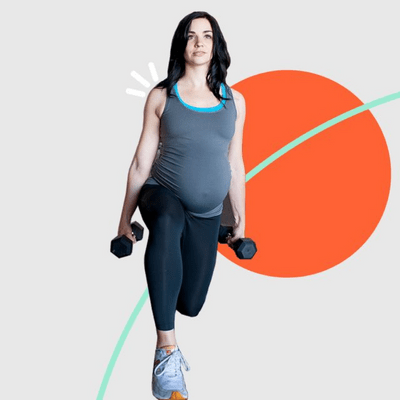Pregnancy and Exercise: Baby, let’s move !
During pregnancy, exercise can help you stay in shape and prepare for labor and delivery. Here’s the lowdown on pregnancy and exercise, from getting started to staying motivated.
Pregnancy might seem like the perfect time to sit back and relax. You likely feel more tired than usual, and your back might ache from carrying extra weight.
But unless you’re experiencing complications, sitting around won’t help. In fact, pregnancy can be a great time to get active — even if you haven’t exercised in a while.
Why exercise during pregnancy?
During pregnancy, exercise can:
• Reduce backaches, constipation, bloating and swelling
• Boost your mood and energy levels
• Help you sleep better
• Prevent excess weight gain
• Promote muscle tone, strength and endurance
Other possible benefits of following a regular exercise program during pregnancy may include:
• A lower risk of gestational diabetes
• Shortened labor
• A reduced risk of having a C-section
Pregnancy and exercise: Getting the OK
Before you begin an exercise program, make sure you have your health care provider’s OK. Although exercise during pregnancy is generally good for both mother and baby, your doctor might advise you not to exercise if you have:
• Some forms of heart and lung disease
• Preeclampsia or high blood pressure that develops for the first time during pregnancy
• Cervical problems
• Persistent vaginal bleeding during the second or third trimester
• Placenta problems
It may also not be safe to exercise during pregnancy if you have any of these other complications:
• Preterm labor during your current pregnancy
• A multiple pregnancy at risk of preterm labor
• Premature rupture of the membranes
• Severe anemia
Pacing it for pregnancy
For most pregnant women, at least 30 minutes of moderate-intensity exercise is recommended on most, if not all, days of the week.
Walking is a great exercise for beginners. It provides moderate aerobic conditioning with minimal stress on your joints. Other good choices include swimming, low-impact aerobics and cycling on a stationary bike. Strength training is OK, too, as long as you stick to relatively low weights.
Remember to warm up, stretch and cool down. Drink plenty of fluids to stay hydrated, and be careful to avoid overheating.
Intense exercise increases oxygen and blood flow to the muscles and away from your uterus. In general, you should be able to carry on a conversation while you’re exercising. If you can’t speak normally while you’re working out, you’re probably pushing yourself too hard.
Depending on your fitness level, consider these guidelines:
• You haven’t exercised for a while. Begin with as little as 10 minutes of physical activity a day. Build up to 15 minutes, 20 minutes, and so on, until you reach at least 30 minutes a day.
• You exercised before pregnancy. You can probably continue to work out at the same level while you’re pregnant — as long as you’re feeling comfortable and your health care provider says it’s OK.
Activities to approach with care
If you’re not sure whether a particular activity is safe during pregnancy, check with your health care provider. Consider avoiding:
• Any exercises that force you to lie flat on your back after your first trimester
• Scuba diving, which could put your baby at risk of decompression sickness
• Contact sports, such as ice hockey, soccer, basketball and volleyball
• Activities that pose a high risk of falling — such as downhill skiing, in-line skating, gymnastics, and horseback riding
• Activities that could cause you to hit water with great force, such as water skiing, surfing and diving
Other activities to avoid include:
• Exercise at high altitude
• Activities that could cause you to experience direct trauma to the abdomen, such as kickboxing
• Hot yoga or hot Pilates
If you do exercise at a high altitude, make sure you know the signs and symptoms of altitude sickness, such as headache, fatigue and nausea. If you experience symptoms of altitude sickness, return to a lower altitude as soon as possible and seek medical care.
Staying motivated
You’re more likely to stick with an exercise plan if it involves activities you enjoy and fits into your daily schedule. Consider these simple tips:
• Start small. You don’t need to join a gym or wear expensive workout clothes to get in shape. Just get moving. Try a daily walk through your neighborhood or walk the perimeter of the grocery store a few times. Take the stairs instead of the elevator.
• Find a partner. Exercise can be more interesting if you use the time to chat with a friend. Better yet, involve the whole family.
• Try a class. Many fitness centers and hospitals offer classes, such as prenatal yoga, designed for pregnant women. Choose one that fits your interests and schedule.
Listen to your body
As important as it is to exercise, it’s also important to watch for signs of a problem. Stop exercising and contact your health care provider if you have:
• Vaginal bleeding
• Dizziness
• Headache
• Increased shortness of breath before you start exercising
• Chest pain
Other warning signs to watch for include:
• Painful uterine contractions that continue after rest
• Fluid leaking or gushing from your vagina
• Calf pain or swelling
• Muscle weakness affecting balance
A healthy choice
Regular exercise can help you cope with the physical changes of pregnancy and build stamina for the challenges ahead. If you haven’t been exercising regularly, use pregnancy as your motivation to begin.











